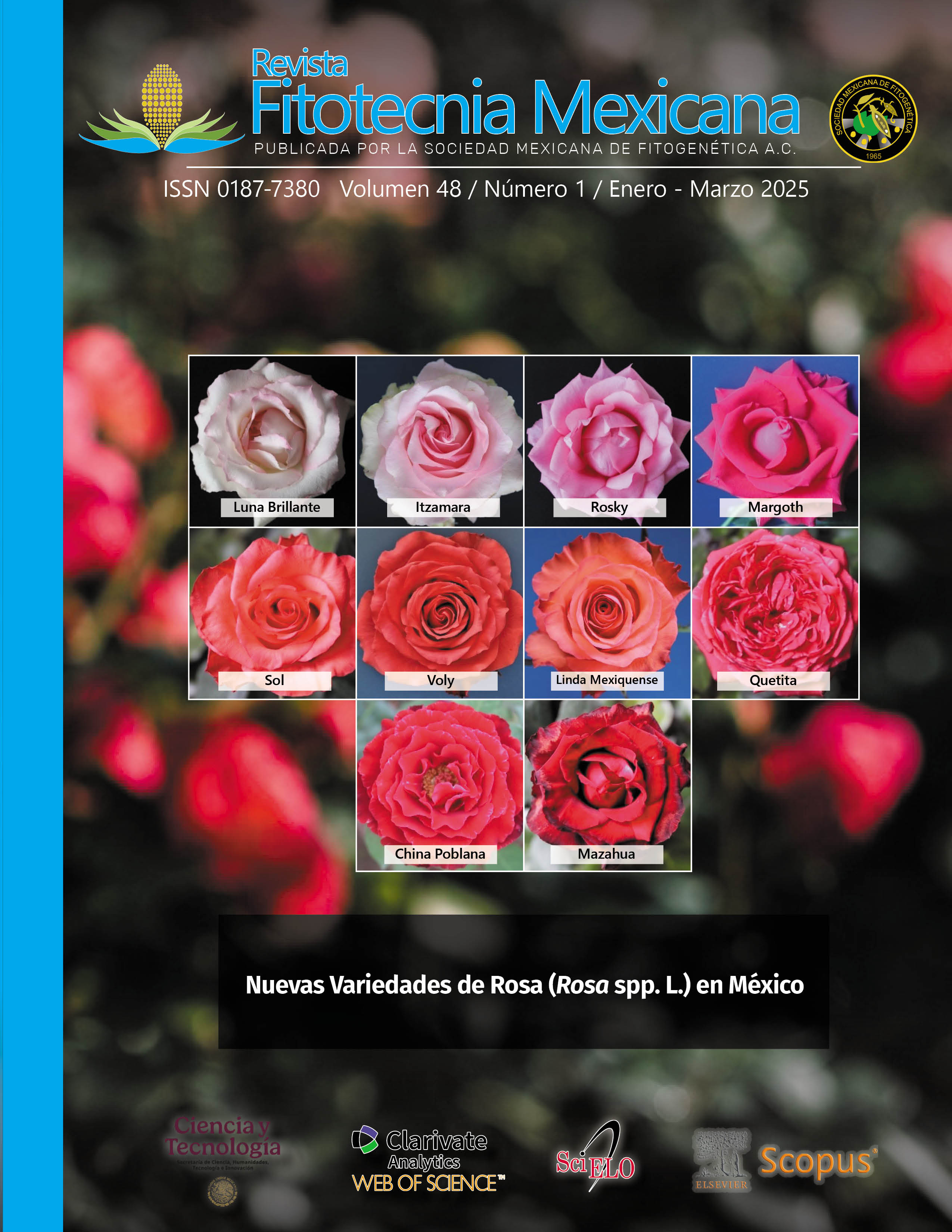HISTOLOGICAL CHANGES IN SERRANO PEPPER LINE 41-1 RESISTANT TO Meloidogyne incognita
Main Article Content
Abstract
Recently, Serrano pepper (Capsicum annuum L.) line 41-1 has been reported as resistant to Meloidogyne incognita (Mi); therefore, the aim of this study was to describe the histological alterations induced by Mi and its reproduction capacity in the chili pepper line 41-1. Three trials were carried out under greenhouse conditions, under a completely randomized design using chili pepper line 41-1, Criollo de Morelos (CM334, resistant control) and variety Tampiqueño 74 (T74, susceptible control). The following aspects were evaluated: 1) prevalence in the soil, 2) penetration into the roots and 3) histological alterations. For trial 1, plants were transplanted into pots containing 2 kg of substrate and inoculated with 2000 J2. For trials 2 and 3, plants were established in containers with 118 cm3 of substrate, and inoculated with 500 J2. Prevalence of J2 in soil 80 days after inoculation (dai) was significantly higher (P ≤ 0.05) in the T74 treatment (164.25 ± 53.84 nematodes per g root), compared to treatments 41-1 and CM334 (3.5 ± 2.06 and 4.0 ± 2.82 nematodes per g root, respectively); results are related to those of trial 2 in regard to the number of individuals per gram of root at 21 dai in T74 (524.6 ± 218.29) significantly higher (P ≤ 0.05) compared to 41-1 (21.3 ± 3.28) and CM334 (34.3 ± 4.48). The histological alterations were similar between 41-1 and CM334, with hypersensitivity response since three days after inoculation and no presence of giant cells (GC), while in T74 GC were observed from nine days after inoculation. These results demonstrate that chili pepper 41-1 has a resistance to Mi similar to that of CM334, with potential to be used in a breeding program.

